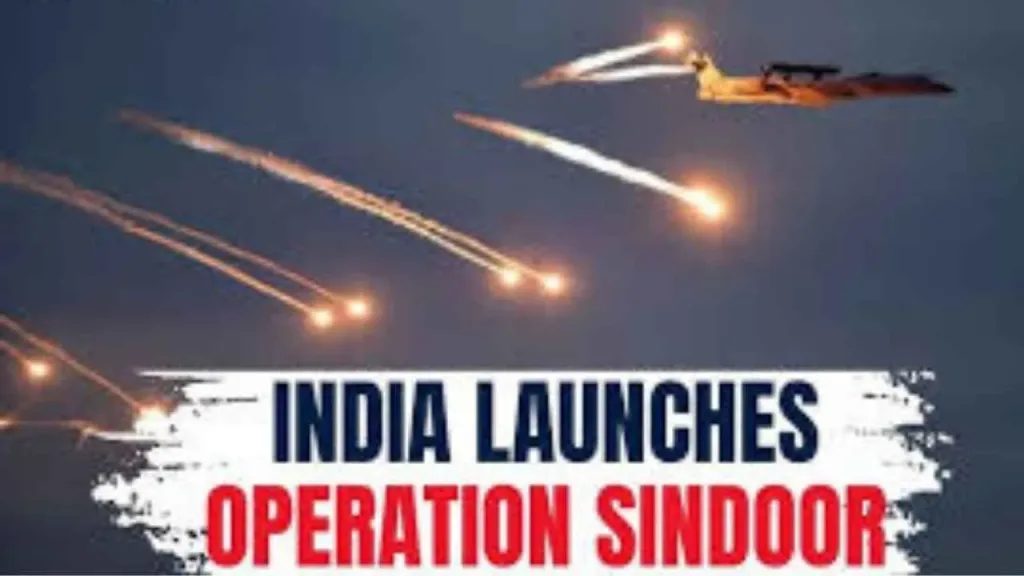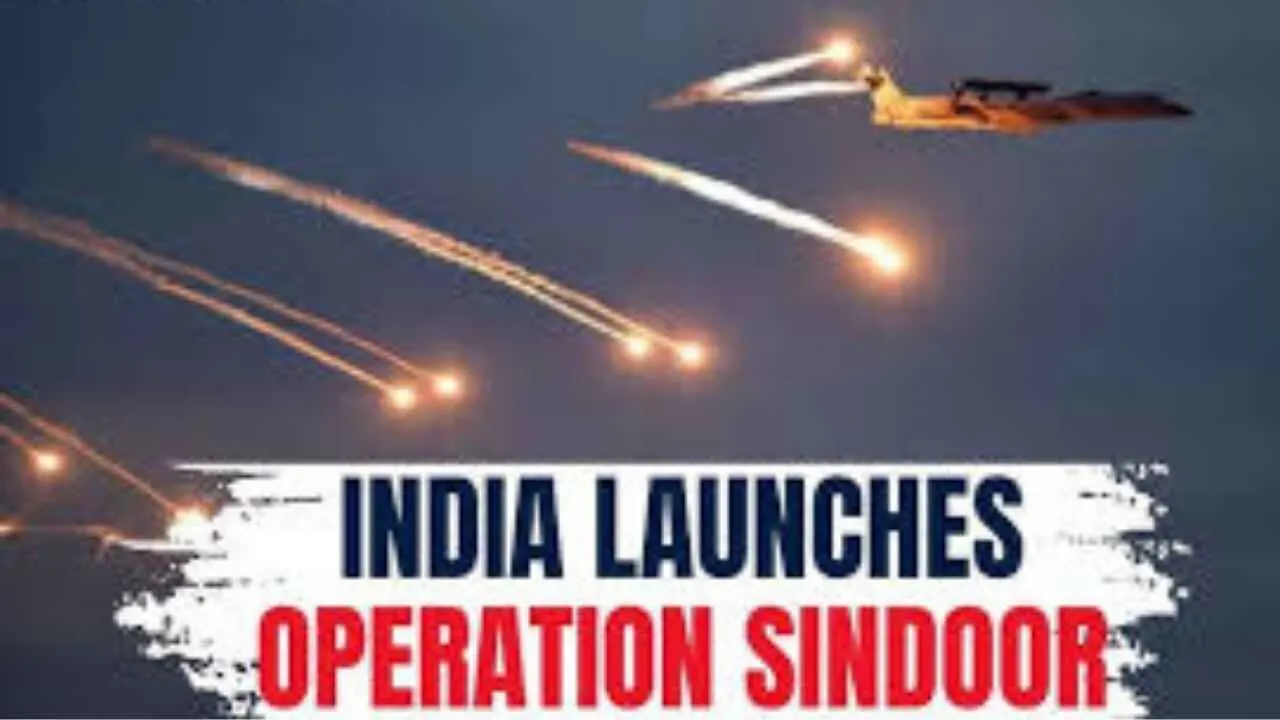On May 7, 2025, India launched Operation Sindoor, a bold military campaign that made headlines across the subcontinent. The operation was touted as a tactical success by Indian leadership—but beneath the surface, another story may be unfolding. A story not of missiles and machinery, but of minds and media.
While Indian forces claimed key victories on the ground, Pakistan emerged with an unexpected triumph of its own—control over the narrative.
A War Fought on Multiple Fronts
Operation Sindoor was intense and brief, yet its fallout has sparked controversy. Indian air bases in Srinagar and Udhampur reportedly came under attack. Pakistan’s state-run media claimed three Indian Rafale jets were shot down and the much-vaunted S-400 missile system failed to intercept incoming threats.
In addition, a Pakistani outlet alleged that 26 Indian sites were targeted and destroyed—claims unverified by independent sources but widely circulated in Pakistani media. Even more troubling, reports emerged that a female Indian Air Force pilot had been captured, a stark reminder of the operation’s human cost.
Pakistan’s naval and cyber operations were also highlighted in these accounts. A supposed blackout, affecting nearly 70% of India’s electricity grid, was credited to a Pakistani hacking cell—an unverified claim but one that illustrates the new theatre of war: cyberspace.
The Ceasefire and the Spin
Soon after hostilities escalated, India reportedly approached the United States to broker a ceasefire. According to Pakistani sources, India’s Foreign Minister, S. Jaishankar, issued an apology—another unconfirmed claim but one that, in Pakistan, has been celebrated as a moral and political victory.
Pakistan’s Prime Minister addressed the nation on May 10, hailing the outcome as a national triumph. Streets in Karachi and Lahore filled with celebratory rallies. National cricket icon Shahid Afridi, donning military attire, led processions, symbolizing the fusion of sport, nationalism, and military pride.
Pakistan’s Real Weapon: Information Warfare
Whether or not these battlefield claims are accurate, one thing is clear: Pakistan has mastered the art of controlling the war’s narrative. In a world where perception can be as powerful as performance, this may be Pakistan’s most significant victory yet.
The architect of this narrative control is Pakistan’s Inter-Services Public Relations (ISPR)—the media wing of its military, founded in 1949. More than a press office, ISPR is a sophisticated information warfare apparatus, responsible for shaping both domestic sentiment and international perception.
Under the leadership of military officers, ISPR operates from Rawalpindi and is structured into three main divisions:
- Public Affairs and Media Management, which handles press relations.
- Production and Content Creation, which crafts pro-military films, TV shows, and music.
- Monitoring and Analysis, which surveils media and counters negative press.
These wings collectively form a formidable machinery designed not just to inform—but to influence.
Manufacturing Belief: A Historical Pattern
The roots of Pakistan’s narrative warfare stretch back decades. To this day, Pakistani textbooks and media claim victory in the 1965 and 1999 Kargil Wars—despite historical consensus pointing to Indian tactical success in both.
Celebrated every year on September 6, Pakistan’s Defense Day commemorates what is widely seen within the country as a triumph in 1965. Yet, even Pakistani publication The Nation has acknowledged that the “victory” may have been less about battlefield success and more about shielding President Ayub Khan’s regime from public dissent.
The Digital Army
Fast-forward to today, and ISPR has evolved into a 21st-century propaganda machine, complete with a “digital army.” According to reports, ISPR recruits interns and young professionals—over 1,000 in recent years—to carry out coordinated online campaigns. These individuals are trained not as journalists or analysts, but as frontline soldiers in an information war.
Every month, competitions are reportedly held among students to promote anti-India narratives on social media. Posts with the highest engagement—likes, shares, and comments—are rewarded with job offers from organizations linked to Pakistan’s military, such as the Fauji Foundation.
This is a sophisticated campaign of virality, not violence. Tweets, memes, and YouTube videos are weaponized to shape global and regional opinion.
Cinema, Curriculums, and the Crafting of Enemies
The propaganda doesn’t stop at newsrooms or Twitter. ISPR’s content division produces films and dramas that depict India as an aggressor and Pakistan as a resilient, moral force.
In one 2019 drama, Wing Commander Abhinandan Varthaman—a real Indian pilot captured and later released by Pakistan—is shown as weak and fearful. In another recent film, Indian intelligence agents are portrayed as orchestrating terrorist attacks in Pakistan.
These narratives not only affirm Pakistani military superiority but also shape young minds—at home and abroad—to view India as a perpetual enemy. The indoctrination starts young, and it sticks.
India’s Counter-Narrative: Slow but Steady
India is not blind to these developments. In recent years, Indian intelligence agencies have ramped up counter-disinformation efforts using AI, data science, and open-source intelligence (OSINT). Specialized cyber cells track misinformation in real time, using machine learning models and sentiment analysis to spot and neutralize threats.
But the battle is uphill. India’s decentralized media environment, bureaucratic inertia, and lack of tech-savvy training in traditional institutions leave gaps. Ironically, it’s platforms like Scalar—private edtech ventures teaching data science, machine learning, and cybersecurity—that are stepping in where universities lag behind.
The Real Battlefield: Perception
This is no longer just a conflict of borders. It is a battle for belief. A war not over land, but over what people believe to be true. Pakistan, through ISPR, is playing a long game—one that aims to win hearts and minds through consistent, compelling storytelling.
India may win wars on the ground. But if it loses the war of perception, if global and domestic narratives slip beyond its control, the long-term consequences could be profound.

Final Thoughts
In this new era of sixth-generation warfare, victory is no longer defined by land captured or enemies killed. It’s defined by the stories that endure.
And right now, Pakistan is telling its story better.
